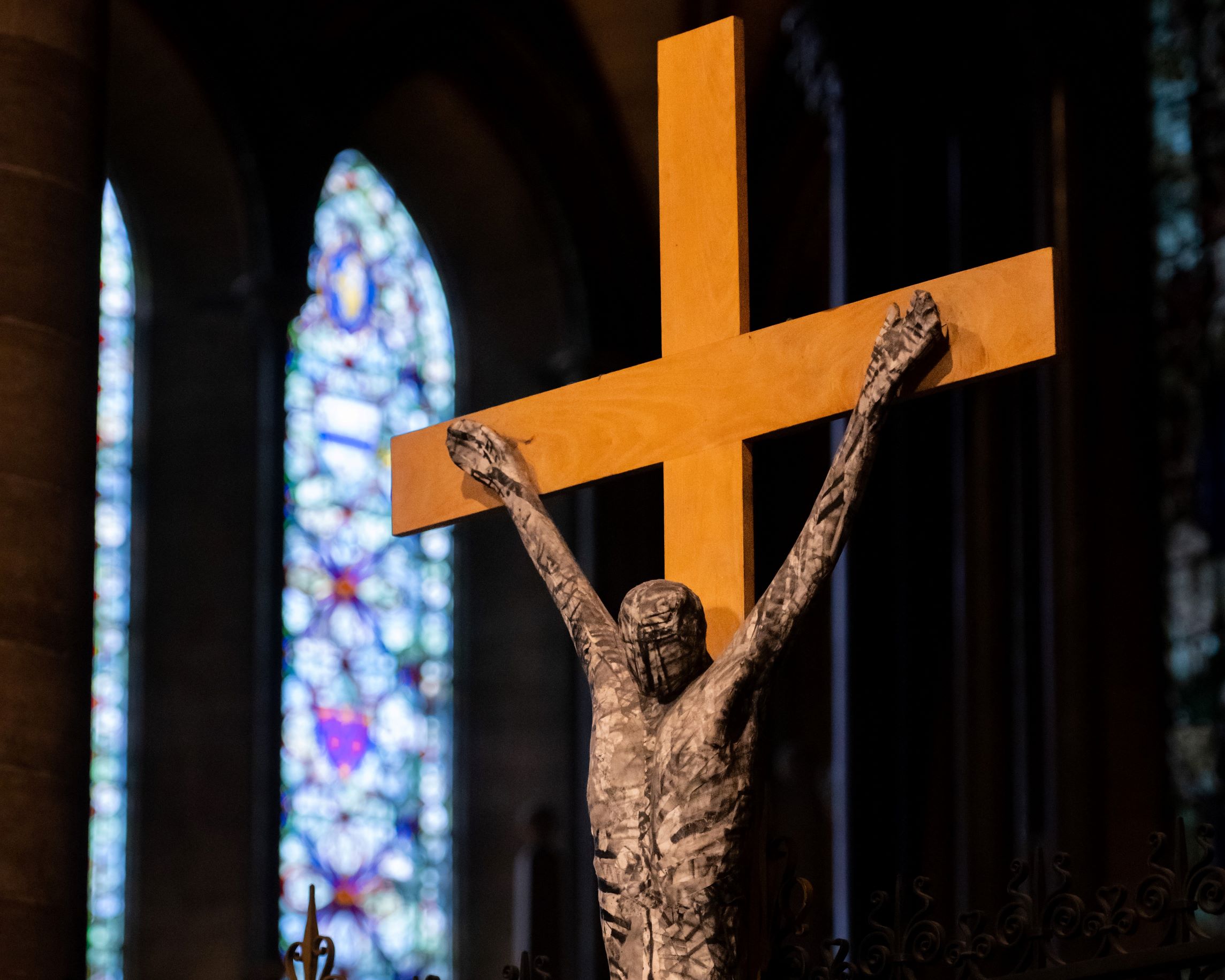Why did Jesus die?

A sermon by Kenneth Padley for Passion Sunday 26th March 2023
Reading: John 11.1-45
Why did Jesus die?
We need to ask this question because it is the theme of this season. Lent has tipped into Passiontide and we are heading towards the annual commemoration of Jesus’ arrest, trial, suffering and cross.
The crucifixion of Jesus is also the direction of travel which underlies today’s gospel. The raising of Lazarus in John chapter 11 is ostensibly an occasion of great celebration. However, the story also plays an ironic role in the narrative of the fourth gospel: it is the greatest demonstration of Jesus’ power and majesty and yet it occasions the plot which will kill him. In raising Lazarus, Jesus enacts his claim to be the ‘Resurrection and the Life’, yet straight after the verses we heard his opponents decry him as a threat to society and conspire to take away his life.
The question ‘why did Jesus die’ might be examined from several angles – but not all these are relevant to our reflections.
For example, one might enquire as a forensic pathologist after the cause of death. To which question we could say that victims of crucifixion die from asphyxiation when their muscles can no longer support the weight of their bodies. That is why Roman soldiers often broke the legs of the crucified so as to accelerate the horrific process. However, we are not considering Jesus’ death from a medical perspective.
Nor are we exploring historical motivations. We could reasonably surmise that a number of parties wished to do away with Jesus.
- The Roman authorities worried about his behaviour on Palm Sunday, entering Jerusalem on a donkey, a potential challenger to the kingship of Caesar.
- The religious authorities were affronted by his critique of the Temple, overthrowing the tables of their moneychangers.
- And I recently read an interesting interpretation of the woman who anointed Jesus’ head with oil, arguing that this was an attempt to coerce Jesus into becoming a military messiah figure, but that Jesus’ reinterpretation of the anointing as a preparation for his burial disenchanted Judas to the point of defection.[1]
Whatever the cumulative effect of these factors, I am not interested today in the historical reasons for Jesus’ execution.
The perspective in which I am really interested is theological – because to ask why Jesus died theologically, is to ask what that death means today, and to seek to bridge the gulf between first-century Palestine and twenty-first-century Britain. How might the life and death of Jesus actually, really, make a difference to me and to you?!
Down the centuries, the Christian tradition has generated three or four potential answers. None is a knock down winner, because each has its own weaknesses. And none is exclusive, as if the others are wrong. Rather, taken together, these ‘models of atonement’ offer complementary sketches of how past event might shape present salvation. As I outline each in turn, I’d ask you to be alert to the model which you find most attractive… in order to suggest that you dwell with the models you find more challenging.
The first model of the atonement says that Jesus makes a difference because he shows us how to live well. This argument appeals readily to the liberal western mindset, asserting that Jesus lived an exemplary life, putting others first and standing up for his principles even to the point of death. Here is a down-to-earth image of how Jesus might influence our life choices, setting us an example to copy. It is a simple model to understand and apply. However, because it is so human, it raises awkward questions about Jesus’ uniqueness. Why should we be inspired by him rather than by any other amazing person… someone such as Greta Thunberg or Malala Yousafzai? In addition, if Jesus is God what extra difference might he make that the great Greta cannot?
In the light of these criticisms, let’s bring on the second model of the atonement and put it under our theological microscope. If the first model majors on Jesus’ humanity, this one emphasises his divinity. It is called the Christus Victor model because it conceives of Jesus’ life, death and resurrection as part of a massive cosmic battle between Good and Evil. It asserts that the resurrection of Jesus at Easter does the thing which mere humanity cannot, crushing death forever. I associate this model with the eastern Orthodox tradition because it is what you see in the Orthodox icon of Easter: resurrected Jesus, victorious from the grave, trampling down the gates of hell and dragging Adam and Eve – that’s you and me by the way – from earthly limitation over into heavenly bliss. When you get home do an internet search for the Greek icon of the ‘anastasis’, as it is known. It is a magnificent image. But its weakness as a model of the atonement is the shadow side of our first model: in this Christus Victor model, Jesus does all the hard work for us – so what need is there for us to respond? Jesus waving a magic wand against death and destruction may alter my eternal destiny, but does it change my heart here and now? And how come there is still evil and sin and guilt in the world?
In response to these doubts, let’s introduce the third model of the atonement. This model conceives Jesus’ actions as making an exchange for sin and guilt, satisfying God’s wrath – or perhaps fulfilling the requirements of God’s absolute goodness. This model flows from the judicial language used by St Paul who understood Jesus as paying the debt caused by ‘Adam’s’ sin – my mistakes and yours. Here is a model about rebalancing the scales of justice. A variation lies in the ritualistic imagery of the Letter to the Hebrews and Gospel of John where Jesus as Lamb of God makes sacrifice on our behalf. This model, much deployed by traditional western Christians – both Catholic and Protestant, torments modern liberals for whom it smacks of judgementalism or even celestial child abuse. Nonetheless, it remains in many theologians’ toolkits because it takes seriously the enormity of human sin as well as Jesus’ self-understanding that he came to give his life as a ransom for many.
I commend these models of the atonement to your reflection and seasonal devotion. Such an exercise is a variation of what we have been doing through this year’s Lent Lectures here in the Cathedral. The lectures have been asking why some people don’t bother with faith or the Church. Models of the atonement pierce this apathy by demonstrating ways in which Jesus makes a clear, personal difference here and now. He is (i) the pattern of our calling, (ii) the victor over death and evil, and (iii) the righteous victim who rebalances the scales of justice. Christians need to be familiar with these concepts. As the First Letter of Peter puts it, ‘always be ready to make your defence to anyone who demands from you an account of the hope that is within you’ (1 Pet 3.15). For when the enquirer or sceptic asks you why Good Friday is good, what will you tell them?




